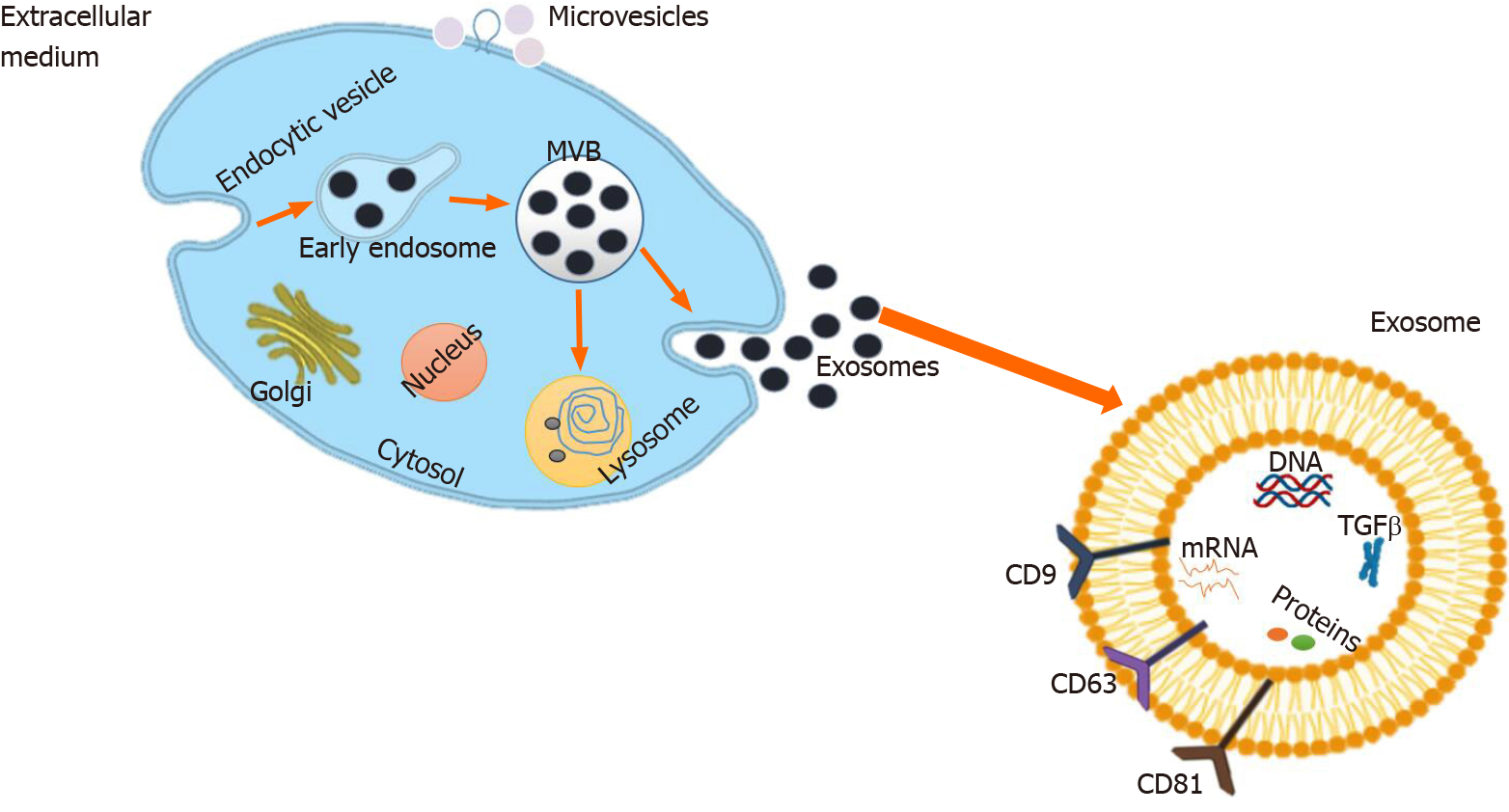Copyright
©The Author(s) 2021.
World J Clin Cases. Jun 26, 2021; 9(18): 4467-4479
Published online Jun 26, 2021. doi: 10.12998/wjcc.v9.i18.4467
Published online Jun 26, 2021. doi: 10.12998/wjcc.v9.i18.4467
Figure 1 Exosome biogenesis.
Exosome biogenesis starts with budding into early endosome and further matures into the late endosome, collectively known as multivesicular bodies. Early endosome is formed from the plasma membrane via the endocytic pathway. Multivesicular body (MVB) can be formed by the invagination of the endosomal membrane. Dependent on the function and content, MVB then can be directed to fuse with plasma membrane and release to the extracellular space as exosomes. During the biogenesis of exosomes and prior to their secretion, proteins (e.g., tetraspanin, cytosolic proteins, and receptor), nucleic acids (e.g., mRNA, miRNA, and DNA), and lipids (e.g., sphingomyelin and cholesterol) are uploaded to exosomes. MVB: Multivesicular body; TGF: Transforming growth factor.
- Citation: Umwali Y, Yue CB, Gabriel ANA, Zhang Y, Zhang X. Roles of exosomes in diagnosis and treatment of colorectal cancer. World J Clin Cases 2021; 9(18): 4467-4479
- URL: https://www.wjgnet.com/2307-8960/full/v9/i18/4467.htm
- DOI: https://dx.doi.org/10.12998/wjcc.v9.i18.4467









